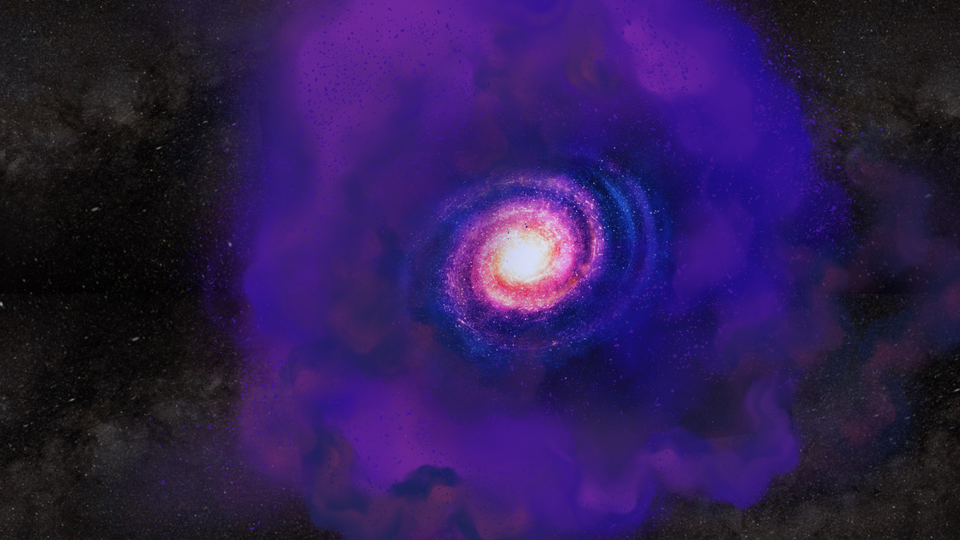The "missing" matter has become a controversial topic among researchers. Photo: NASA . |
After decades of searching, scientists have finally discovered the "missing" matter in the universe that makes up planets, stars, people and everything around us.
In the universe, matter is divided into two types: dark matter and normal matter. Although it only accounts for about 15% of the total matter in the universe, normal matter has long puzzled scientists because they have not been able to identify about half of the baryons, the fundamental particles that make up atoms.
A new study published in Nature Astronomy on June 16 said astronomers used fast radio bursts (FRBs) to track down this missing matter. The team analyzed data from 69 FRBs emitted from distant points in the universe.
As the radio pulses travel through space, they interact with intergalactic gas and slow the waves down. Based on the time delay, scientists can estimate the density of matter along the FRB's path.
“The results show that the missing matter exists mainly as thin gas, dispersed in the intergalactic medium. This is a foggy network that stretches between galaxies,” said Professor Liam Connor, an astronomer at the University of Toronto.
In addition, a small amount of normal matter has also been found in the gas halos surrounding galaxies, including the Milky Way. According to Professor Connor, violent physical processes such as supernovae or the activity of giant black holes could have “blown” this gas out of the galaxy, causing it to drift into intergalactic space.
“If the universe were not as chaotic as it is now, you might imagine that all the ordinary matter would have cooled down and formed stars. But in fact, extreme physics prevented that from happening, pushing the matter out into space,” Professor Connor said.
The discovery helps answer one of the big questions of modern cosmology, and provides a new tool for measuring the missing baryonic matter in the universe using radio astronomy. Although the origin of FRBs remains a mystery, scientists believe they are related to highly magnetized neutron stars, the remnants of massive stars that die.
Source: https://znews.vn/them-mot-bi-mat-vu-tru-vua-duoc-ly-giai-post1561711.html



![[Photo] Prime Minister Pham Minh Chinh chairs conference to accelerate disbursement of public investment capital, deploy key projects and eliminate temporary and dilapidated houses](https://vphoto.vietnam.vn/thumb/1200x675/vietnam/resource/IMAGE/2025/6/23/fcb205e3ca19432eac326f55123308f4)


![[Photo] General Secretary To Lam works with the Party Committee of the Fatherland Front and Central organizations](https://vphoto.vietnam.vn/thumb/1200x675/vietnam/resource/IMAGE/2025/6/23/a252b388e91447ac8fabf948c00f2a21)

![[Photo] Prime Minister Pham Minh Chinh chairs national online conference on new rural construction and poverty reduction](https://vphoto.vietnam.vn/thumb/1200x675/vietnam/resource/IMAGE/2025/6/23/0d239726be21479db1ea6d8d77691a6d)
























































































Comment (0)